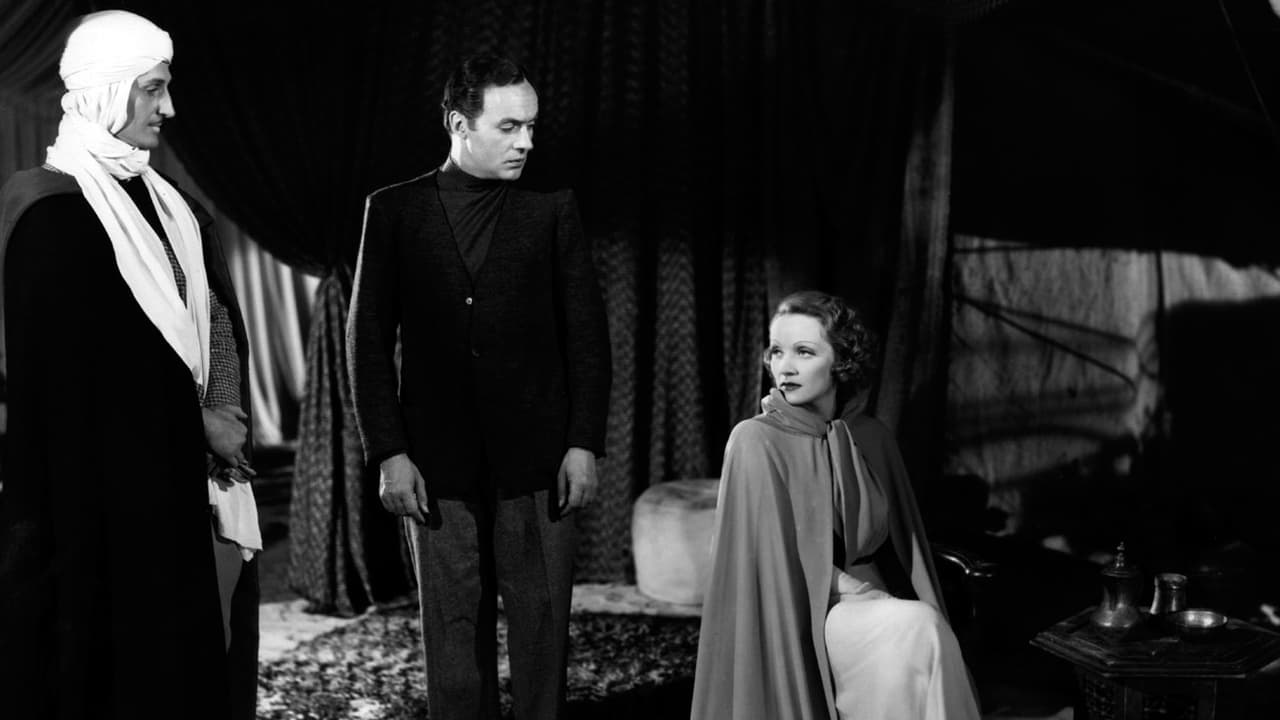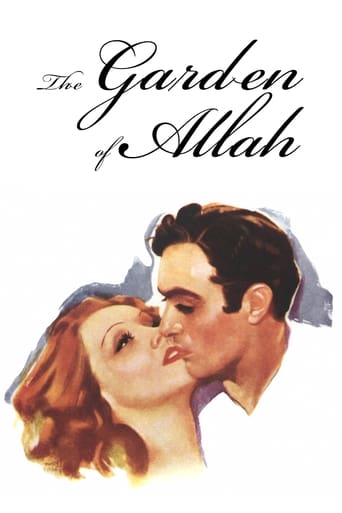



Sadly Over-hyped
Purely Joyful Movie!
Best movie ever!
A great movie, one of the best of this year. There was a bit of confusion at one point in the plot, but nothing serious.
View MoreDavid Selznick must have seen The Sheik 14 years earlier, and decided that it was time for a similar film in color, therefore he shopped around for another really bad novel and voila! The best part of this film is without doubt the color - real fest for the eyes. for the depression audiences looking to escape the grim reality of their daily grind, it must have been overwhelming. The 3-strip Technicolor process was unbeatable and the last film I saw in that process 'My Favorite Concubine' was made 60+ years later in China and the color still stands out. My late husband told me that it was superior in that it did not fade, but it was a cumbersome and exacting process and was replaced by single strip formats which were easier to work with. Whether or not that is true, I have seen many color films fade to a horrible tint within a few years. As for the story, A young woman grieving the loss of her father visits the convent where she was raised and is advised to take a trip into the desert to find herself. Off she goes with a number of suitcases filled with designer clothing, and joins a caravan, courtesy of the local ruler. On the train she meets a mournful young handsome man, travelling with one small suitcase and wearing a rather shabby brown suit. Next evening she visits a local dive where Tilly Losch performs the same dance she gave in 'duel in the Sun', leaving the young man he mortified. Not to worry, Dominia soon hooks up with him as his tiny bottomless suitcase has produced a smart riding habit, and an even smarter tailored costume and polished riding boots to wear in the desert, and after a quick marriage they head off into the desert in a sandstorm. Surprisingly his suitcase did not contain a flowing Arab robe or even a silk dressing gown for the nighttime wear. The idyll is soon broken after a lost group of legionaries arrive and one recognizes the bridegroom as a runaway monk. After a long speech explaining that after many years in the monastery, he had just wanted to see the outside world, and a few minutes soul searching, he returns to the monastery. Both weep. End of story!Charles Boyer is excellent as the mysterious darkly handsome Valentino type. Marlene Dietrich is miscast as the deeply religious wife, and the story never rises above the type of chaste pulp romance aimed at 13-year old girls, which we used to call 'love books'. Ms. Dietrich has about 40 costume changes with never a dry cleaners, laundry or ironing board in sight, but they are always spotless and crease free. Likewise the Arab garments which resemble an ad for Persil detergent. There is the usual dim witted native played for laughs, without which no 1930's movie was without, but it is not overdone. Otherwise, the film is gorgeous to look at. Just turn off the sound, put on your favorite music, pour a glass of wine and relax.
View MoreAfter her father expires, moody Marlene Dietrich (as Domini Enfilden) leaves her convent to seek solace from God in the Sahara Desert. Meanwhile, chaste Charles Boyer (as Boris Androvsky) abruptly leaves his monastery. After taking his sacred vows, he's off to find "love" in the desert. They seem like a match made in Heaven, but don't be fooled. The copulation turns out to be an affront to God. Even worse, for lovers of liqueur, Mr. Boyer takes with him the secret recipe of an alcoholic drink, handed down from monk to monk. "God will not punish us," declares Ms. Dietrich, "if we can trust Him to show us the way..."Although "The Garden of Allah" drew viewers into cinema seats, there weren't enough to justify the cost. The film helped studios decide stars like Dietrich and Boyer looked more profitable in black-and-white. Classic performers did not always appear in color; a major star's paycheck already upped the budget. Herein, Dietrich models and Boyer pouts... The film's main strength is the outstanding achievement in color photography, by W. Howard Greene and Harold Rosson. A fine supporting cast helps, especially fast-talking Joseph Schildkraut (as Batouch). And, dancer Tilly Losch (as Irena) make a great first impression.***** The Garden of Allah (10/15/36) Richard Boleslawski ~ Marlene Dietrich, Charles Boyer, Joseph Schildkraut, Basil Rathbone
View MoreAlthough color film technology had been experimented with for some twenty years before producer David O. Selznick decided to utilize it in 1936's "The Garden of Allah," it never achieved the lushness and depth seen in this movie until the 3-strip color processing technique patented by Technicolor came to the fore. And ravishing color is really the best reason for seeing this movie. Even with Marlene Dietrich and Charles Boyer as its stars, "The Garden of Allah" doesn't manage to get off the ground. The beautiful score by Max Steiner, and creditable cameo performances by C. Aubrey Smith, Joseph Schildkraut, John Carradine and Basil Rathbone (among others) all do their best to lend drama to what is essentially a slow, meditative potboiler with heavily theological underpinnings, but alas, it's no go. The problem lies not only in the tepid filmscript but with the decision to cast Dietrich and Boyer in the roles of the star-crossed lovers. If there's one thing both performers possessed in abundance, it was smouldering sex appeal. In "The Garden of Allah," however, they're forced to play against type as otherworldly characters with somewhat saintly pasts, and -- frankly -- it doesn't click. It would be like casting Marilyn Monroe opposite Clark Gable in a lavishly produced movie about the First Council of Nicaea, and then expecting romantic sparks to fly. It would make no sense, and the audience wouldn't buy it.The color in "The Garden of Allah," however, truly gorgeous... soft and deeply saturated and glowing with inner fire. It almost makes the movie worth sitting through.
View MoreBoy and girl meet God. Boy and girl lose God. Boy and girl find each other. Boy and girl find God again. This is not really a formula that caught on.There's some great Technicolor cinematography here. The sets are believable, at least for those of us who have never been to Morocco, and the music is pleasant.The acting is fine. Marlena and Charles make a lovely couple. Basil is dashing and John Carradine reads fortunes in sand like he preaches in "Grapes of Wrath".The problem lies with the main characters and the plot. The characters are torn between a saintly life and a normal life. For the vast majority of us, it is not a real problem. It is hard to relate to that kind of dilemma, and that is really the only kind of problem that the two lead characters face.When it comes right down to it, I don't want to see Marlena Dietrich as Mother Teresa, I want to see her as Lola Lola.People always talk about the Jewish/communist influence in Hollywood, but it was the Roman Catholic Church that really successfully infiltrated and brought their propaganda to Hollywood (e.g. "Going My Way").This film is a good example of the type of film that would warm the hearts of any Catholic Legion of Decency member.
View More